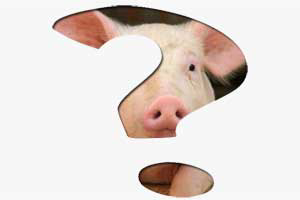BLOG: Gaps in our knowledge

While going round pig units over the past two years there have been occasions when a problem has arisen that I can find no good evidence towards a solution. Perhaps those excellent young scientists I meet at conferences and Expos might like to think about these `inconnus` in pig production?
Big pens for weaners. Increasing in popularity due to lower housing costs, but it seems to matter where the feed troughs are situated and the feeding space allowances. More information please, as what very little advice exists is varied.
Nursery management. Several of my contacts report better progress on finish weight if more feed allowance is provided for 10 to 14 days post-weaning. They say a third to a half more on the current trough or hopper space published got them 3 to 4 days saved at the expensive (food and housing) end of the growth period. Research needed to confirm/quantify this opinion. It could be part of the `uneven litter` problem, see below, as the lighter weaners get a better start. Interesting and worth investigation.
Farm Specific Diets. This concept, which I covered in two articles in this Journal, (PP Vol. 27. Nos.9 and 10 (2011), is justifiably growing. It could be a major revolution in the way we buy feed, but cost/benefit information is to date meagre, possibly because those far-sighted feed compounders developing the idea with selected customers are keeping their data close to their chests. Fair enough, but some independent trial work is needed for the good of everybody. It is too promising a concept to be kept under wraps for too long.
Weak legs and lameness in the tropics. Whenever I visit pig units in `hot/wet ie. tropical, climates, leg strength in sows especially seem to be a real nuisance, probably aggravated by the hard unbedded floors used due to the generous use of water to keep things cooler. These producers use genes developed mainly in temperate climes. Question for our excellent genetic companies exporting their seedstock there. “Do you not need to develop special female lines for hot/wet conditions?“ And for the local nutritionists on the spot “You seem to be using breeding sow specifications more akin to temperate climatic conditions – where the work establishing them was done. Don`t you need to do your own research on special nutrition specifications for hot/wet conditions and for the rather different ingredients available to you?” Could be part of your lameness problems, too.
Uneven litters. Growing problem due to welcome hyperprolificacy – but in my experience it has always been there, but largely ignored until we started to get these larger litters of numbers born. Almost no information on what an uneven litter actually costs in lost growth and poorer use of food to finish weight compared to a nice even spread of birthweights. I`ve had a stab at it myself (see the current `What the textbooks don`t tell you` column) but proper research is needed on this subject. We may know what to do about it, but the producer needs to be alerted as to how much this is costing him so that he does do it. The damage is creeping up on him.
If any reader has other suggestions please let me know.







